
|
Astronomy Picture Of the Day (APOD)
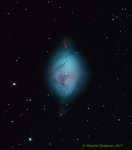 NGC 1360: The Robin s Egg Nebula
NGC 1360: The Robin s Egg Nebula
11.05.2018
This pretty cosmic cloud lies some 1,500 light-years away, it shape and color reminiscent of a blue robin's egg. It spans about 3 light-years, nested securely within the boundaries of the southern constellation Fornax.
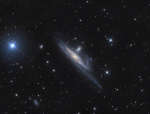 Galaxies in the River
Galaxies in the River
10.05.2018
Large galaxies grow by eating small ones. Even our own galaxy practices galactic cannibalism, absorbing small galaxies that get too close and are captured by the Milky Way's gravity. In fact, the practice...
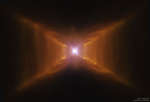 The Red Rectangle Nebula from Hubble
The Red Rectangle Nebula from Hubble
9.05.2018
How was the unusual Red Rectangle nebula created? At the nebula's center is an aging binary star system that surely powers the nebula but does not, as yet, explain its colors. The unusual...
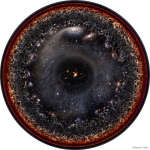 The Observable Universe
The Observable Universe
8.05.2018
How far can you see? Everything you can see, and everything you could possibly see, right now, assuming your eyes could detect all types of radiations around you -- is the observable universe. In visible...
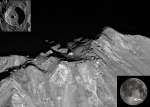 The Unusual Boulder at Tychos Peak
The Unusual Boulder at Tychos Peak
7.05.2018
Why is there a large boulder near the center of Tycho's peak? Tycho crater on the Moon is one of the easiest features to see, visible even to the unaided eye (inset, lower right). But at the center of Tycho (inset, upper left) is a something unusual -- a 120-meter boulder.
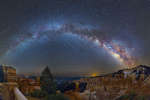 Meteors, Planes, and a Galaxy over Bryce Canyon
Meteors, Planes, and a Galaxy over Bryce Canyon
6.05.2018
Sometimes land and sky are both busy and beautiful. The landscape pictured in the foreground encompasses Bryce Canyon in Utah, USA, famous for its many interesting rock structures eroded over millions of years.
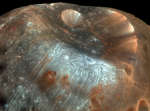 Stickney Crater
Stickney Crater
5.05.2018
Stickney Crater, the largest crater on the martian moon Phobos, is named for Chloe Angeline Stickney Hall, mathematician and wife of astronomer Asaph Hall. Asaph Hall discovered both the Red Planet's moons in 1877.
 The View Toward M101
The View Toward M101
4.05.2018
Big, beautiful spiral galaxy M101 is one of the last entries in Charles Messier's famous catalog, but definitely not one of the least. About 170,000 light-years across, this galaxy is enormous, almost twice the size of our own Milky Way galaxy.
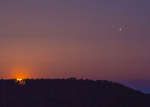 Opposite the Setting Sun
Opposite the Setting Sun
3.05.2018
On April 30, a Full Moon rose opposite the setting Sun. Its yellowish moonglow silhouettes a low tree-lined ridge along Lewis Mountain in this northeastern Alabama skyscape. Sharing the telephoto field-of-view opposite the Sun are Earth's grey shadow, the pinkish Belt of Venus, and bright planet Jupiter.
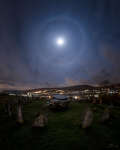 Moon Halo over Stone Circle
Moon Halo over Stone Circle
2.05.2018
Have you ever seen a halo around the Moon? This fairly common sight occurs when high thin clouds containing millions of tiny ice crystals cover much of the sky. Each ice crystal acts like a miniature lens.
|
January February March April May June July August September October November December |
|||||||||||||||||||||||||||||||||||||||||||||||||